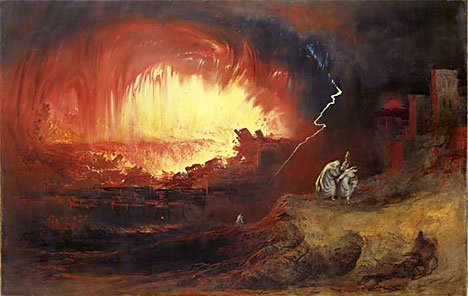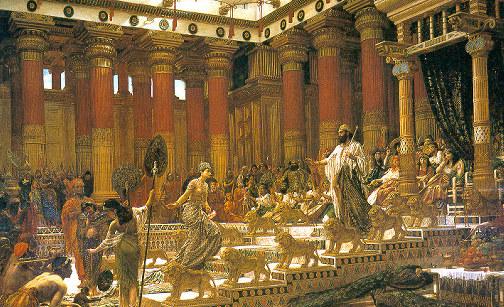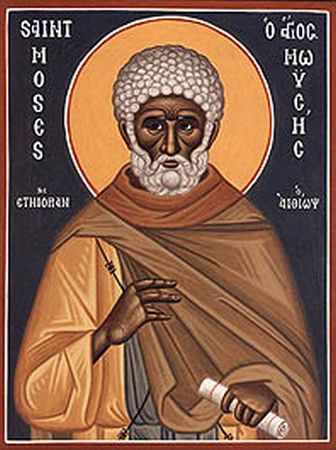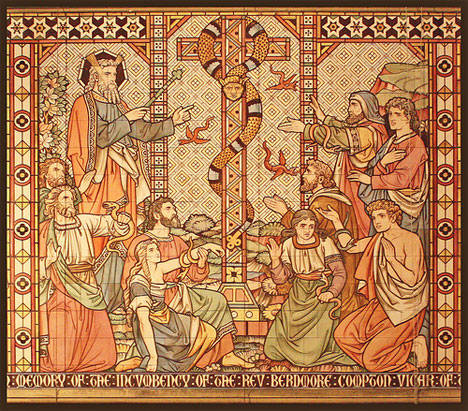Mar
5
2012

“…and they saw the God of Israel. And there was under His feet as it were a paved work of sapphire stone, and it was like the very heavens in its clarity. But on the nobles of the children of Israel He did not lay His hand.” (Exodus 24:10-11)
Well, I’ve been blustering on about art and “intuition” in generalities for about a week now. Fluffy generalities are exactly the kind of thing that annoys me about many Biblical scholars, and I reckon it annoys God, too. They never seem to get down to specifics, and He is very specific. This shows in His architecture, and also in His literary architecture. So, here, in a section of Matthew 14, is a chance for me to get specific and show you what is possible with this “killer hermeneutic.” [1]
After a brief look at the structure of this passage the other day, I thought I’d spend some more time on it. A closer analysis has revealed an even greater beauty than I expected. (I have briefly referenced the order of words in the Greek to avoid any great missteps, so it may not be perfect, but it’s close.) Much learning hath indeed made me mad but I hope you’ll take a few minutes to see this passage through my eyes.
Continue reading
Comments Off | tags: Atonement, Booths, Covenant curse, Covenant Theology, Feasts, High Priest, Laver, Literary Structure, Matthew, Moses, Tabernacle, Ten Commandments | posted in Against Hyperpreterism, Bible Matrix, Biblical Theology, The Last Days
Feb
14
2012

“Let this mind be in you which was also in Christ Jesus, who, being in the form of God, did not consider it robbery to be equal with God, but made Himself of no reputation, taking the form of a bondservant, and coming in the likeness of men. And being found in appearance as a man, He humbled Himself and became obedient to the point of death, even the death of the cross. Therefore God also has highly exalted Him and given Him the name which is above every name, that at the name of Jesus every knee should bow, of those in heaven, and of those on earth, and of those under the earth, and that every tongue should confess that Jesus Christ is Lord, to the glory of God the Father.” (Philippians 2:5-11)
This passage (or pericope?) retraces the Covenant pattern, which is also played out in the flow of the history of Israel. We’ll have a look at the structure of the passage and then I want to discuss the significance of the literary placement of “every tongue.”
WARNING: Weird ahead.
[This post has been refined and included in Sweet Counsel: Essays to Brighten the Eyes.]
Continue reading
2 comments | tags: Achan, AD70, Babel, Babylon, Circumcision, Covenant Theology, Evangelism, Genesis, Herod, Joshua, Moses, Pentecost, Philippians, Postmillennialism, Systematic typology, Tabernacle, Tongues | posted in Bible Matrix, Biblical Theology, The Last Days
Dec
19
2011

The systematic typology of the Bible Matrix allows us to follow the structures of the Torah thoughout the rest of the Bible. Here’s something that links the Restoration era with the book of Deuteronomy.
Continue reading
Comments Off | tags: Baptism, Deuteronomy, Esther, Exodus, James Jordan, Jeremiah, Mordecai, Moses, Systematic typology, Tabernacle, Ten Commandments, The Law | posted in Biblical Theology, Quotes, The Restoration Era
Dec
3
2011
1 Peter 2:4-10 | Sermon Notes

The Stoning of Israel
I think it’s worth looking at the literary structure of this passage. Here’s a revised version of the sheet I handed out after the sermon.
As I’ve written before, modern readers (and commentators) only look at the content of the text, but the authors of Scripture also communicate to us through where they place that content within that text, i.e. how it is arranged.
Continue reading
1 comment | tags: Baptism, Covenant curse, Covenant Theology, Literary Structure, Lot, Moses, Peter, Ruth, Systematic typology, Tabernacle, The Law, Typology | posted in Bible Matrix, Biblical Theology
Oct
31
2011
or The Cultic Core of Revelation

“Revelation is not just a vision of the King of Kings,
but of the King of Kings in His court.”
Preterists have a go at dispensationalists for interpreting the Bible through the lens of current headlines. We recognize that the Bible must be interpreted in its historical context, for its “first audience.” But there’s a brand of “newspaper exegesis” that plagues preterism as well.
Continue reading
Comments Off | tags: Dispensationalism, Ezekiel, James Jordan, Josephus, Kenneth Gentry, Moses, Preterism, Revelation, Tabernacle | posted in Biblical Theology, Quotes, The Last Days
Jun
26
2011

We receive baptism, but is membership of the visible New Covenant body entirely objective? The Old Covenant church, “the Body of Moses,” was Adamic. The Tabernacle was a Babelic tower, a ladder to heaven, laid out prostrate on the ground. The New Covenant Body, the Body of Jesus, is Evian. As a Temple filled with the Spirit of God, it stands upright and walks on the Crystal Sea.
Continue reading
Comments Off | tags: Babel, Baptism, Esther, Mordecai, Moses, Revelation, Tabernacle | posted in Bible Matrix, Biblical Theology, The Last Days
May
30
2011

There is great advantage in tracking the shape of God’s work in history through the Old Testament. This is because God is consistent. Everything He does has the same shape, even though He does it in new and surprising (and sometimes devastating) ways.
One of the big handles in Scripture is the five-fold Covenant pattern, described by Ray Sutton in his book, “That You May Prosper: Dominion by Covenant.” Continue reading
Comments Off | tags: Against Hyperpreterism, Covenant Theology, Creation Week, Feasts, Moses, Ray Sutton, Revelation, Revelation 20 | posted in Against Hyperpreterism, Bible Matrix, Biblical Theology, The Last Days
Mar
24
2011

“And thou shalt set bounds unto the people round about, saying,
Take heed to yourselves, that ye go not up into the mount,
or touch the border of it:
whosoever toucheth the mount shall be surely put to death.”
Exodus 19:12
The Bible beats blood and water into us over and over again. Blood is death. Water is resurrection. Blood is the Bridegroom and water is the Bride.
Continue reading
5 comments | tags: Ascension, David, goliath, Laver, Moses, Revelation, Sinai, Tabernacle | posted in Bible Matrix, Biblical Theology, Creation, Totus Christus
Mar
12
2011

“And as Moses lifted up the serpent in the wilderness,
even so must the Son of Man be lifted up…” John 3:14
Peter Leithart recently noticed a chiasm in John 3:
A. Lifted up
…B. Serpent
……C. Wilderness
…B’. Son of Man
A’. lifted up.
Bible Matrix readers should notice immediately the wilderness at the centre. This means there is a lot more to this single phrase of Jesus’ conversation with Nicodemus. In fact, there is all of heaven and earth.
Continue reading
Comments Off | tags: Covenant Theology, John, Literary Structure, Moses, Peter Leithart, Tabernacle | posted in Bible Matrix, Biblical Theology



































